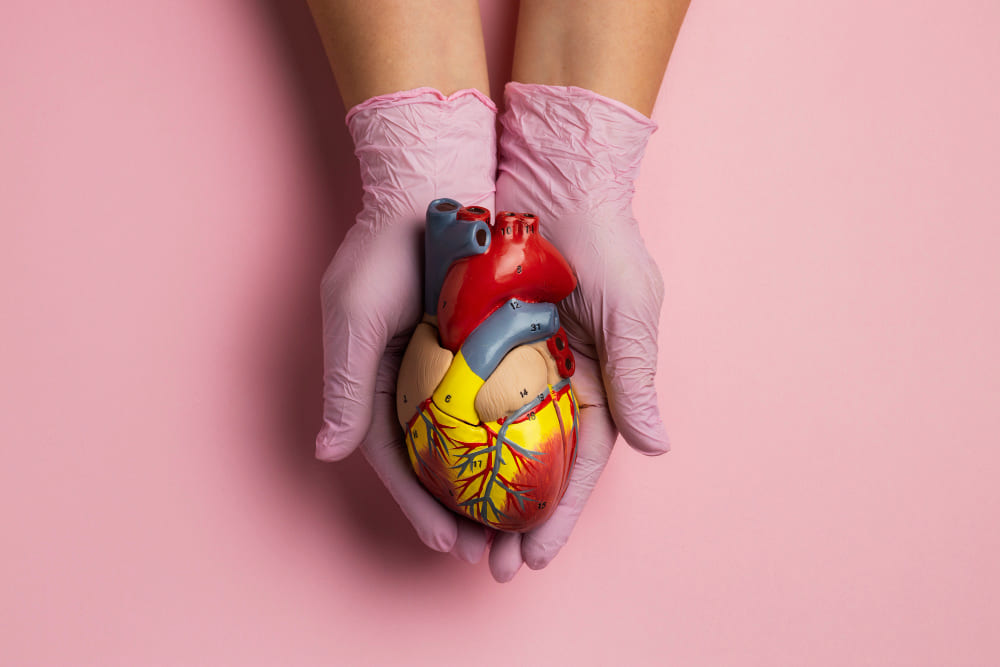Congenital heart defects are structural issues arising at birth, which can be easily treated or require multiple surgeries over several years. Understanding your child’s congenital heart problem can help you understand the situation and anticipate the future.
Define Pediatric Heart Condition
Pediatric heart conditions can impact the heart’s structure, electrical system, and blood vessels responsible for regulating the heartbeat.
How does the Heart function?

Understanding the basis of how a heart functions in its normal structural state helps understand cardiac disorders. The heart’s four chambers consist of two ventricles and two atria, collecting blood and pumping it to the body and lungs. Four types of heart valves, including the tricuspid, lungs, mitral leaf, and aortic valves, maintain blood flow. The heart’s electrical system regulates heartbeat rhythm, sending electrical messages to contract parts of the heart, and circulating blood throughout the body. The body’s heart muscle circulates blood:
1. Blood with low oxygen content is pumped via the right side to the lungs, where it is oxygenated.
2. The left side supplies the body’s organs and tissues with oxygen-rich blood through the blood pump.
The right atrium and right ventricle allow blood to enter the right side of the heart. It then travels to the lungs to take up oxygen. Blood that has more oxygen comes back to the left side of the heart. It travels via the left ventricle and left atrium before being pushed out to fuel the body.
Pediatric Heart Disease Causes

Most congenital cardiac defects have unidentified causes. There might be various variables. Some illnesses are linked to genetic disorders that develop on their own or are handed down via families. Childhood infections, like rheumatic fever, can trigger other illnesses.
People Also read – Raising Healthy Kids: Expert Guidance from The Doctors’ Hub Pediatrician
Risk Factors for Cardiac Conditions in Children
Rubella during pregnancy might lead to cardiac abnormalities in the infant. If the mother is not immune, there is a vaccination available, and immunity can be confirmed via blood tests. Diabetes management before and throughout pregnancy can help lower the incidence of congenital cardiac abnormalities. Some medicines, including epilepsy treatments, and medicines for anxiety, increase the chance of congenital heart defects. Drinking and smoking during pregnancy both raise the risk. Congenital cardiac abnormalities may additionally be inherited and linked to genetic diseases like Down syndrome or a missing gene on chromosome 22.
Treatment for Cardiac Conditions in Children

Timely treatment is often crucial to finding a heart issue before it becomes serious. The results may indicate that a child’s heart functions normally or that immediate medical attention is required. Prenatal screening is one type of test that may be done before your baby is born.
Common tests include:
1. A prenatal echocardiogram (an ultrasound of the fetal heart) produces clear pictures of a developing baby’s heart and other organs.
2. An electrocardiogram measures the electrical activity of the heart.
3. An echocardiogram is used to monitor the heart’s architecture and blood flow.
4. Diagnostic cardiac catheterization is used to assess the heart and lungs.
5. CT (computed tomography) scans generate high-resolution pictures of the heart, blood arteries, and lungs.
6. Cardiac MRI (magnetic resonance imaging) provides excellent, detailed pictures of the moving heart.
7. Genetic testing is used to uncover DNA alterations that may contribute to heart disease.
Signs of Heart Conditions in Children

1. Congenital heart abnormalities develop during early pregnancy and alter the heart’s anatomy. These problems can cause heart failure, high blood pressure, valve anomalies, and vein and artery disorders that impair the heart’s capacity to pump blood efficiently.
2. Acquired cardiac problems, while less prevalent than congenital anomalies, can be caused by childhood illnesses, chronic diseases, medication, or surgery. Kawasaki disease, rheumatic heart disease, and pericarditis are examples of conditions that cause inflammation and damage to the heart valves.
3. Arrhythmias are irregular heartbeats that are typically induced by stress, exercise, or fever. They may cause a child’s heart to beat too rapidly or too slowly, skip beats, or have additional beats. There are two basic types of heart rhythms: rapid (tachycardia) and slow (bradycardia).
4. Genetic disorders can affect a child’s heart and organs, which could result in significant consequences. Experts in fetal heart care can assist families in understanding their options and arranging for treatment.
Preventing Cardiac Conditions in Children
A regular multivitamin with folic acid can help prevent birth abnormalities. Avoiding drinking and smoking, being vaccinated against rubella, maintaining blood sugar, treating chronic health disorders, and avoiding hazardous medications during pregnancy are all vital.
Conclusion
Prenatal care is required for the health of the mother and the unborn child. If there is evidence of a cardiac problem or defect, speak with a Doernbecher doctor before taking any medicines, as some might cause birth abnormalities.


Leave a Reply